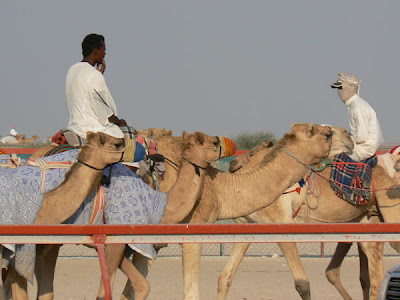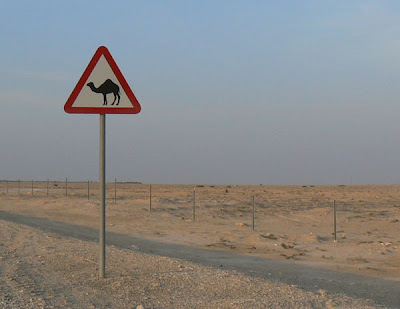
If you are from England, a farm may be a place with green fields, white sheep and pretty black and white cows. However, Qatar’s first camel farm will be radically different from this.
The camel farm is to be established in one of Qatar’s most arid areas, and will be powered though solar and wind power – and possible also from camel dung.
One of the aims of the farm is to prevent or reverse the process of desertification. Ironically, the cause of the desertification is overgrazing by camels. However, the key word here is overgrazing – camels in the right number form a key part of the eco-system by both fertilizing and pollinating the desert. Having a camel farm makes a lot of sense – in fact, in Australia it makes so much sense that there are fifty of them, although tourism makes up a fair proportion of their income.
Having a camel farm makes a lot of sense – in fact, in Australia it makes so much sense that there are fifty of them, although tourism makes up a fair proportion of their income.
Unlike the Middle East's pampered cows, the indigenous camel does not require air-conditioning. Furthermore, camel milk contains three times as much vitamin c as cow’s milk, and is also high in iron, vitamin B and unsaturated fats.
It is also very popular. Many people in this region believe it is an aphrodisiac, while across the world it is regarded as an effective medicine for many ailments.
Despite this, there is a serious under supply of camel milk, and people in some countries have to trek hundreds of miles to buy it. In other words, as Anthony Bennet, of the United Nations Food and Agriculture Organisation, said: “Milk is money".
Also see:
The Next Thing : Camel Milk (United Nations Food and Agriculture Organisation)
Qatar Plans First Camel Farm (The Peninsula)
Camels: God's Gift to the Bedouin
Qatar Camel Racing
Qatar Visitor e-store (U.S.)
Qatar Visitor E-store (U.K.)
Find the best deal, compare prices and read what other travellers have to say about Qatar
Tags
Qatar Doha Middle East camels


